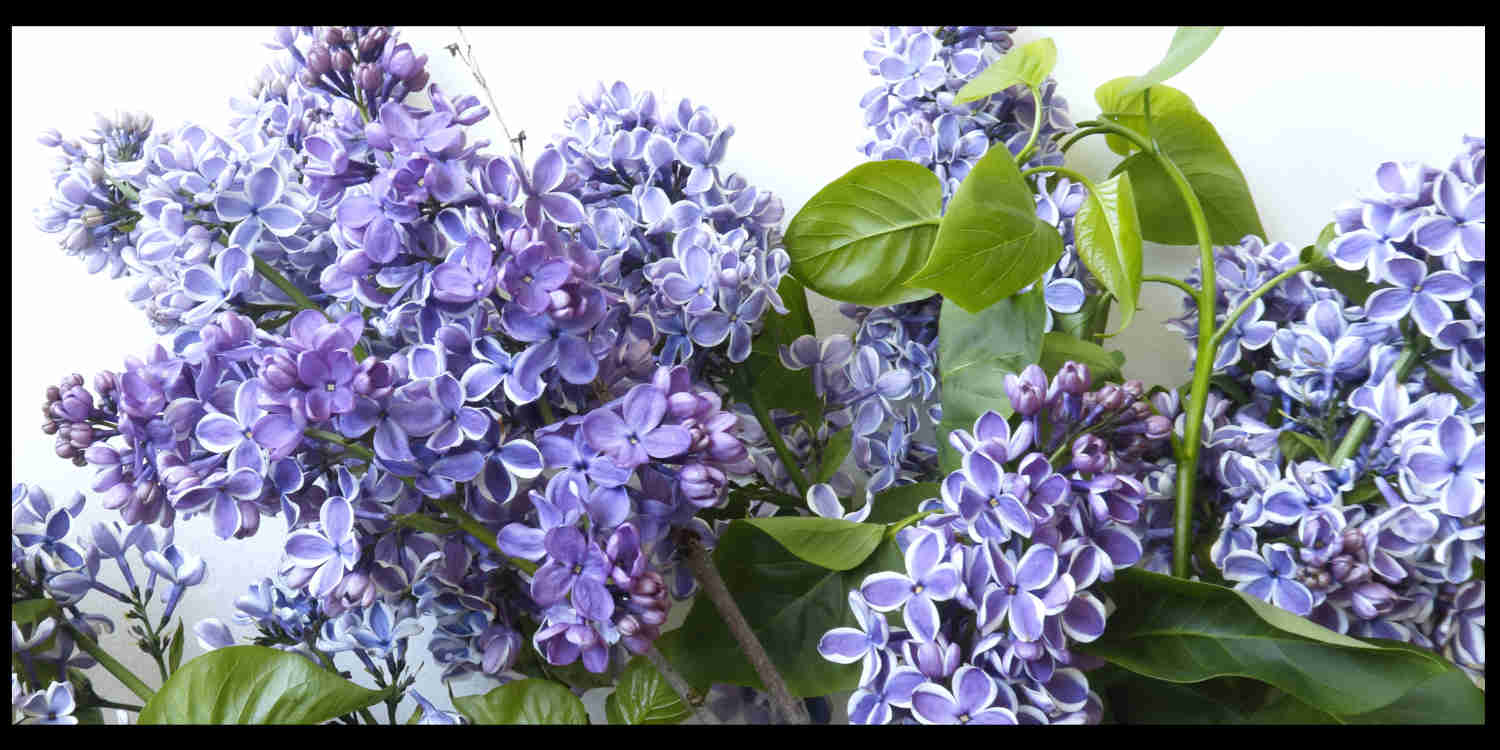Syringa.
Family Oleaceae > Tribe Oleeae > Subtribe Ligustrinae.
The 12 species of Lilacs are native to Asia and S.E. Europe.
The small deciduous shrubs or trees are from 1.5 to 9 m or 10 high.
The opposite leaves may have a petiole or almost none.
Almost all sprcies have simple leaves with a heart-shaped or elliptic blade but a few have pinnate leaves.
The tip is pointed and the edge is usually smooth but some species have fine teeth.
A few also have hairs on the leaves.
Terminal or axillary inflorescences may be a solitary flower but most are branched clusters (panicles).
Erect to drooping they can be conical (pyramidal), tubular or irregular in shape with dense to more spaced flowers.
Flowers are on a stalk (pedicel) that may have bracteoles and there may be bracts under the panicle branches.
Flowers up to 2 cm long and 1 cm across have 4 sepals and petals in 2 whorls.
The calyx has a tubular base with irregular teeth or a flattish top.
The narrow corolla tube has 4 spreading lobes that are usually shorter than the tube.
Species flowers come in white, cream, blue, pink, lilac, purple and lavender.
Colours may change as the flowers age and some fade to white.
The 2 stamens, with or without a filament insert onto the corolla tube.
The dorsi- or basi-fixed anthers open inwards through longitudinal slits.
The anthers may remain in the corolla tube or extend past it.
The superior ovary, of 2 fused carpels has 2 locules each with 2 (1) ovule attached to the central axis.
The single style has 2 stigma lobes.
There may be a nectiferous disk.
The fruit are a dry brown loculicidal capsule that opens at the tip first.
The up to 4 seeds have a wing.
There are 2 sub-genera:
Ligustrina species, with white or cream flowers, have a short corolla tube with the anthers lying outside it.
Syringa species, with mostly purple flowers, have anthers that stay within the long narrow corolla tube.
J.F.


